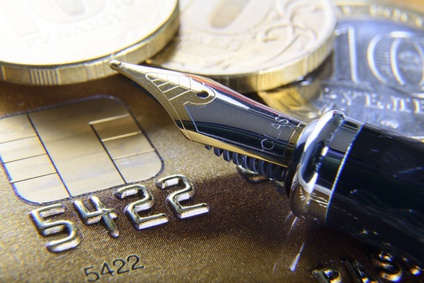 A credit card lets you pay for goods and services without using cash. At the beginning of 20th century, people paid for everything with cash, from food to a rental fee. Businesses tried to create more trust with their customers by offering individual business/store credit accounts. This allowed consumers to purchase goods and services on credit and later pay the bill. That credit card, however, could only be used at that exact store.
A credit card lets you pay for goods and services without using cash. At the beginning of 20th century, people paid for everything with cash, from food to a rental fee. Businesses tried to create more trust with their customers by offering individual business/store credit accounts. This allowed consumers to purchase goods and services on credit and later pay the bill. That credit card, however, could only be used at that exact store.
Let’s take a quick stroll down the memory lane as we explore the history of credit cards.
The current idea of credit cards, where individuals can make purchases at a variety of stores using a single credit card, came after 1950. The idea of a credit card came after the head of the Hamilton Credit Corporation, Frank X. McNamara, was eating dinner with some of his friends. One of them was the grandson of Bloomingdale’s Department Stores named Alfred Bloomingdale – who was among the people who played a key role in the development of credit cards. The other friend was Ralph Sneider.
After the dinner, McNamara removed his wallet to foot the bill only to find out he didn’t have any money in his wallet. He had no alternative apart from calling his wife to help him get some cash. It was after this embarrassing moment that McNamara vowed to find a lasting solution to this problem. He came up with the concept of using one credit card at multiple stores, gas stations and restaurants. Before that, each store issued its own credit card to consumers. Stores would issue credit cards to customers and customers will repay the money after a specified period of time. According to McNamara’s idea, a middleman was to provide consumers with credit and consumers to pay back that middleman.
McNamara, Sneider and Bloomingdale, pooled their financial resources together and they acted as the middlemen for the credit transaction. In 1950, they started a company known as Diner’s Club. In order to make profit from these cards, the company charged customers a $3 annual fee and charged stores a 7 percent fee on all transactions. Though modern credit card companies generate profit by charging interest on debt, that concept would not come about until just recently.
Business owners were very excited about the McNamara’s credit card idea. It did away with the need to have a credit card for each store. However, some merchants did not take this idea positively. Why would they pay another company just for selling a product or service? Despite the mixed reactions, nothing would prevent the implementation of the credit card from taking off.
The Diner’s Club made a profit of 60,000 dollars in its second year. McNamara and his two colleagues had started a company that would later change the way people make purchases. However, he thought the idea won’t last. For this reason, he sold his shares in the company to his two partners Bloomingdale and Sneider for a whopping $2,000,000.
At the moment, more than 180 million Americans have credit cards. And it is estimated that each credit card owner has an average of five credit cards. The idea of paying for goods and service with credit cards has now become the order of the day. And it is cash that is becoming completely irrelevant. In fact, the world is becoming a cashless society. It goes without mentioning that credit cards are here to stay. Though he sold his shares to his two partners after he gave up on creating a universal credit card that can be used by customers throughout the world, McNamara will remain the founder of credit cards.






